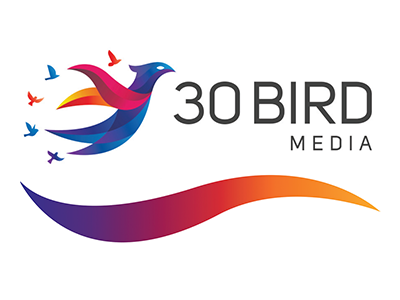 |
Business Problem Solving: Problem-Solving Teams (Instructor Guide) |
1.00 |
Problem-solving teams are created to solve a specific business problem. Ideally, such a team should have members from different departments of your organization. However, you need to develop skills to focus team members on a common goal.
As a team leader, you might be expected to create a team, rather than simply manage a group of people assigned to complete a task. You will play a central role in helping team members interact, communicate, and work together. You will also be expected to plan and execute team meetings. Meetings can be an effective way to communicate information to the group, to decide on an action, to set goals, and to motivate and support team members.
In this course you will learn to: build and manage problem-solving teams and conduct effective meetings, and motivate team members and effectively communicate with them.
This Instructor's Edition of this course includes notes and suggestions to assist you in presenting the material, whether in an in-person classroom setting or as an instructor-led online or distance-learning course. It also provides you with the answers to questions found in mid-lesson activities, as well as in the quiz that concludes the course. |
 |
Business Problem Solving: Problem-Solving Teams |
1.00 |
Problem-solving teams are created to solve a specific business problem. Ideally, such a team should have members from different departments of your organization. However, you need to develop skills to focus team members on a common goal.
As a team leader, you might be expected to create a team, rather than simply manage a group of people assigned to complete a task. You will play a central role in helping team members interact, communicate, and work together. You will also be expected to plan and execute team meetings. Meetings can be an effective way to communicate information to the group, to decide on an action, to set goals, and to motivate and support team members.
In this course you will learn to: build and manage problem-solving teams and conduct effective meetings, and motivate team members and effectively communicate with them. |
 |
Business Problem Solving: Problem-Solving Basics (Instructor Guide) |
1.25 |
Problem-solving is aimed at eliminating problems. The problem-solving process involves identifying a problem, gathering information, generating and evaluating options, and implementing solutions.
Effective problem-solving needs the coordination of knowledge, experience, attitude, intuition, and the abilities of an individual or team. By successfully eliminating problems the first time, you will save your company’s resources and improve its operation.
In this course you will learn to: define the fundamentals of problem-solving, and identify effective problem-solving approaches.
This Instructor's Edition of this course includes notes and suggestions to assist you in presenting the material, whether in an in-person classroom setting or as an instructor-led online or distance-learning course. It also provides you with the answers to questions found in mid-lesson activities, as well as in the quiz that concludes the course. |
 |
Business Problem Solving: Problem-Solving Basics |
1.25 |
Problem-solving is aimed at eliminating problems. The problem-solving process involves identifying a problem, gathering information, generating and evaluating options, and implementing solutions.
Effective problem-solving needs the coordination of knowledge, experience, attitude, intuition, and the abilities of an individual or team. By successfully eliminating problems the first time, you will save your company’s resources and improve its operation.
In this course you will learn to: define the fundamentals of problem-solving, and identify effective problem-solving approaches. |
 |
Business Problem Solving: Problem Solving in the Corporate World |
0.84 |
Problem-solving cultures greatly influence the problem-solving process in organizations. Recognizing the culture that exists in your organization will permit you to develop effective solutions. This approach needs employees with a wide variety of skills and talents.
In this course you will learn to: identify the types of problem solvers and the skills they must possess, and identify different corporate cultures. |
 |
Business Problem Solving: Problem Solving in the Corporate World (Instructor Guide) |
0.84 |
Problem-solving cultures greatly influence the problem-solving process in organizations. Recognizing the culture that exists in your organization will permit you to develop effective solutions. This approach needs employees with a wide variety of skills and talents.
In this course you will learn to: identify the types of problem solvers and the skills they must possess, and identify different corporate cultures.
This Instructor's Edition of this course includes notes and suggestions to assist you in presenting the material, whether in an in-person classroom setting or as an instructor-led online or distance-learning course. It also provides you with the answers to questions found in mid-lesson activities, as well as in the quiz that concludes the course. |
 |
Principles of Geriatric Pharmacotherapy |
1.00 |
Principles of Geriatric Pharmacotherapy, designed for health care professionals, teaches you how to identify treatment goals in older adults. Problems of aging are covered, such as the physiologic changes of the older population. Furthermore, this module identifies tools available to prevent inappropriate prescribing of medication, specifically highlighting the Medication Appropriateness Index, the Beers Criteria, and the STOPP/START Criteria. Some specific medications are discussed that require special care when prescribing them. Finally, you will learn how to ensure safe medication use in older adults. |
 |
Popular Tourniquets |
1.00 |
Prehospital trauma care has not seen many changes that rival the advent of tourniquets. There is a lot of material that is nice to know. This lesson is a brief review of what we believe medics need to know. Successful completion of this lesson will set the stage for higher-level conversations. More importantly, we hope that you will be encouraged to practice applying the tourniquets until you have obtained true proficiency. Final Exam: This multiple-choice exam is designed to test your knowledge of the material you just reviewed. You have two attempts to gain an 80% or higher on this exam. Please take your time and answer each question carefully.
|
 |
Microsoft PowerPoint 2019 Complete |
16.00 |
PowerPoint 2019 Complete covers the concepts and skills needed for maximum productivity in PowerPoint, starting with fundamentals and working up to advanced tools and techniques. This course maps to the objectives of the Microsoft Office Specialist exams for PowerPoint 2019. Objective coverage is marked throughout the course, and you can download an objective map for the series.
Students will benefit most from this course if they want to start with the basics and become power users of 2019. The course covers how to create, navigate, format, and customize PowerPoint presentations, as well as advanced features such as animation, transition techniques, adding and formatting media, track corrections, working with multiple presentations, creating custom slide shows, and working with security and sharing options.
The course assumes students know how to use a computer, and that they're familiar with Microsoft Windows. It does not assume that they've used a different version of PowerPoint or any other presentation program before. |
 |
Organizational Communication: Power, Politics, and Diversity (Instructor Guide) |
0.75 |
Power is the ability to influence someone to do something that they would not do without encouragement. Various types of power and power strategies depend on the level of influence. The existence of different levels of power in an organization gives rise to organizational politics.
Politics can arise between individuals who differ from each another. To avoid confrontation arising from differences, it is important for people to recognize the benefits of diversity within their organization.
In this course you will learn to: identify different levels and types of power, identify strategies to manage diversity and to communicate in different cultures, and identify the steps and guidelines for empowerment.
This Instructor's Edition of this course includes notes and suggestions to assist you in presenting the material, whether in an in-person classroom setting, or as an instructor-led online or distance-learning course. It also provides you with the answers to questions found in mid-lesson activities, as well as in the quiz that concludes the course. |











